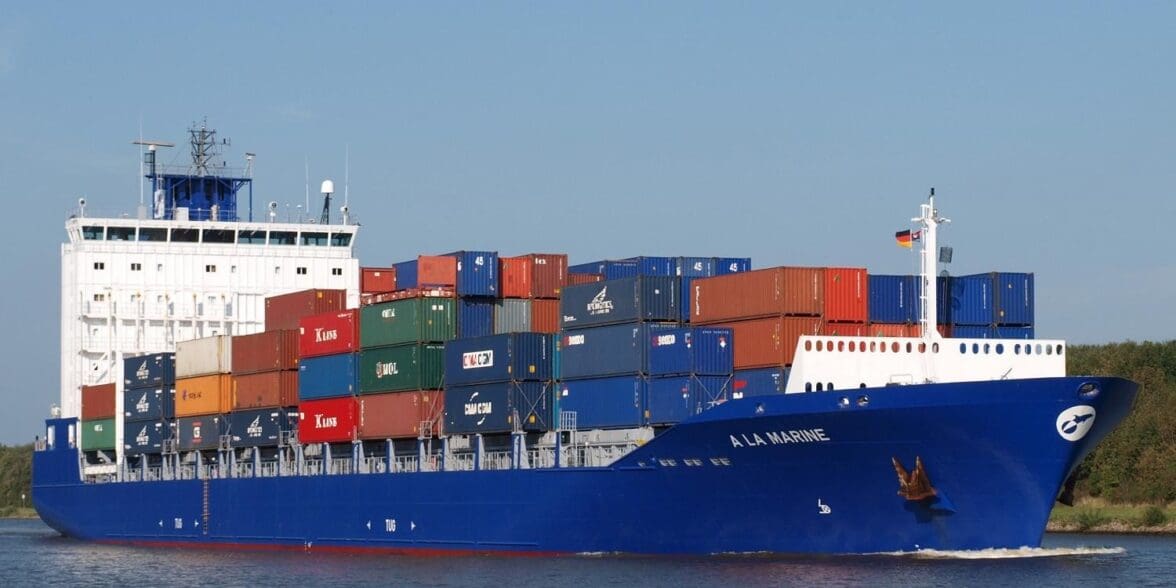Importing a motorcycle for your own use will be a little easier from next year, although the exchange rate and last-minute changes to the rules could dampen your enthusiasm.
Last year the Federal Government changed the personal importing rules.
Riders will be able to import a new motorcycle or other vehicle from January 1 without having to deal with a dealer so long as the model is not already imported into Australia.
However, the Federal Chamber of Automotive Industries (FCAI) warned that the move would take out the “buyer beware” sentiment, leaving motorists exposed to “high-risk situations”.
So now last-minute potential changes to the vehicle importing legislation have been tabled, but not yet approved.
If they are, it will mean riders will not be able to import five-year-old Japanese and UK vehicles like under the New Zealand “grey imports” situation.
Also if a manufacturer has the rights for importing a particular brand/model, an individual will not be able to “parallel import” it.
Under the Specialist and Enthusiast Vehicle Scheme (SEVS), the criteria for allowing single importing of a vehicle/motorcycle has been altered.
Now a vehicle must meet only one of six criteria to be eligible.
For more specific importing details, we suggest you ask an import specialist like Bruce Hartwig. Click here to send him an email.

Otherwise, the FCAI has produced a web page of questions and answers about the new legislation and the following list.
Summary of importing changes
(Yet to be confirmed with DIRD)
|
Topic |
Explanation of Change |
Implications/Comments |
|
Personal imports |
Not proceeding with personal imports of new vehicles |
Existing personal import provisions, i.e. vehicle was purchased and owned the vehicle for a period of at least 12 months, will be retained. |
|
Removal of Identification (compliance) Plate |
The requirement to fit an Identification (compliance) plate will be removed along with the compliance plate fee of $6 per vehicle. |
The government will introduce a cost for certification based on a cost recovery model. With the Australian government continuing to harmonise with UN Regulations, the administrative effort for certification (for FCAI member brands) should reduce and therefore cost should be lower. While the administrative effort and cost for concessional schemes (i.e. SEVS) should be higher. |
|
Introduction of a “secure identification” |
The government will introduce a requirement for a secure vehicle identification to provide a significant deterrent to motor vehicle theft and re-birthing. (Note: discussions with DIRD indicate that a secure label will be needed to meet this requirement.) |
The FCAI has developed a proposal for a VIN label with security requirements aligned with both the EU 19/2011 and US secure label requirements. FCAI member brands have indicated they currently meet these requirements in Australia and/or in an overseas market. It is expected that all FCAI member brands will be able to meet the proposed VIN label requirement with the same secure label material that they currently use to comply with either EU 19/2011 (for EU delivered vehicles) and/or ADR Circular 0-3-2. |
|
Introduction of Register of Approved Vehicles (RAV) |
Introduction of an “on-line” Register of Approved Vehicles (RAV) to record each vehicle’s compliance information. The RAV will be a publicly searchable on-line database of vehicles approved for use on Australian roads. A fee for entry onto the RAV will be introduced. Submission of vehicle details. |
Brands will need to add all vehicles to the RAV, pay a fee and the date of entry onto the RAV will be the “compliance” date, i.e. date for application of relevant ADRs. Potential purchasers, repairers and insurers can search a Vehicle Identification Number (VIN) for verification of certification information such as make, model, build date and approval type (entry pathway to the RAV). The RAV will also identify motor vehicle source, i.e. whether the motor vehicle’s entry pathway was via Type Approval (i.e. via the authorised brand) or via one of the concessional schemes, e.g. SEVS. The fee is not known at this time. But as the Government has advised it will be based on “cost recovery”, the fee should be substantially less than the current $6 per vehicle compliance plate fee. Brands will need to submit vehicle details for entry onto the RAV. Brands may need to introduce system changes. |
|
SEVS Register |
Criteria for entry onto the SEVS Register:
Vehicles will only remain on the SEVS Register for 2 years. |
The new SEVS criteria aims to more closely align with the aims of the concessional scheme, i.e. provide for specialist or enthusiast vehicles that are not delivered to the market in full volume.
To add a vehicle to the SEVS Register, an application will need to be submitted – both initially and after 2 years to keep the vehicle on the Register. Just having a vehicle on the SEVS Register does not automatically allow for importation and delivery to the market. |
|
RAWS |
There are a range of changes to reduce regulatory administration and costs for RAWS workshops;
|
While these changes should reduce the administrative burden and costs for RAWS workshops, the accompanying changes to the SEVS and introduction of independent inspections should both reduce the vehicles able to be imported and reduce “rorting” of the SEVS. |
|
Authorised Vehicle Verifiers |
Introduce Authorised Vehicle Verifiers (AVV) to provide an independent third party to provide a detailed verification of all vehicles supplied under SEVS. AVVs will verify that:
The AVV is also required to add the vehicle details to the RAV (once the vehicle passes the inspection procedure). |
The AVV is required to be independent of the RAWS workshop and utilise experienced and suitably skilled personnel to conduct the vehicle inspections. |
|
New motorcycles |
New motorcycles that meet the SEVS criteria will be able to be imported under SEVS |
Will need to undergo the full SEVS/RAWS/AVV process. The RAV will identify when the motorcycles have been imported under SEVS and the entity responsible for importing and certifying the motorcycle. |
|
Used motorcycles |
The current system with no restrictions on the importation of used motorcycles, where full compliance with the ADRs can be demonstrated, will continue. |
The RAV will identify when the motorcycles have been imported as used motorcycles and the entity responsible for importing and certifying the motorcycle. Used motorcycles will need to be inspected by AVV. |
|
Vehicles over 25 years old |
Introduction of a concessional scheme to allow the importation of passenger cars, light commercial vehicles (<3.5 tonne GVM) and motorcycles that are at least 25 years old. |
Imported vehicles over 25 years old may need to be modified to be registered. DIRD is to work with state/territory registration authorities to establish the appropriate requirements. |
Procedure for importing a SEVS vehicle (Note: to be confirmed with DIRD)
There are a number of steps that will be required to import a SEVS vehicle and deliver it to a customer. These steps will add additional cost and time (DIRD is involved, e.g. approval of model report) that should also impact on the attractiveness of importing new models via SEVS. The steps to deliver a SEVS vehicle to the market are:
- To add a vehicle to the SEVS Register, the vehicle must;
- Not have a full volume approval;
- Be released somewhere in the world at least 3 months previously;
- Meet one of the 6 criteria (DIRD Info Sheet 5); and
- DIRD will assess the application, and if approved, add the vehicle to the SEVS Register.
- Once the vehicle is on the SEVS Register, certification approval is still necessary. This is where the model report is developed.
-
- To develop a “model report”, a certification engineer needs to submit the necessary evidence against the applicable ADRs to DIRD (see DIRD Info Sheet 6).
- To develop the model report, the certification engineer will need to source and import a vehicle to undertake an evaluation of which ADRs the vehicle meets and what (if any) modifications are necessary. This is necessary as the certification engineer will not have access to the OEM’s certification and test data and is expected to add a significant period of time (3-6 months) into the process.
- The vehicle needs to be available for DIRD to inspect as part of the assessment of the model report.
- Note: with elimination of the compliance plate and $6 fee, DIRD is reviewing the cost for certification and is expected to develop charge based on time. This should increase cost for approval of model report.
- DIRD will assess the “model report” and approve (if correct).
- The model report can be sold to any RAWS workshop.
- To develop a “model report”, a certification engineer needs to submit the necessary evidence against the applicable ADRs to DIRD (see DIRD Info Sheet 6).
- For each vehicle imported, DIRD will need to issue a vehicle import approval.
-
- Note: An import approval would not be granted unless the model is already on the SEVS Register (note: need to confirm).
- Each vehicle imported must then be modified to meet the requirements of the certification approval (i.e. the model report).
- Each vehicle must be inspected by an Authorised Vehicle Verifier (DIRD Info Sheet 6).
-
- The Authorised Vehicle Verifier (AVV) is to be appointed by DIRD.
- Info sheet 6 also outlines the criteria for an AVV, including the need to manage conflicts of interest. There is an expectation that the AVV will be independent of the RAWS workshop.
- Once the vehicle passes the inspection, the AVV submits the vehicle information to NEVDIS and the Register of Approved Vehicles (RAV).
-
- The vehicle can then be registered.
- Note: the RAV will identify that the vehicle is imported via SEVS. Any prospective buyer (and their finance and insurance companies) will be able to access this information and make the necessary decisions on the added risk.


